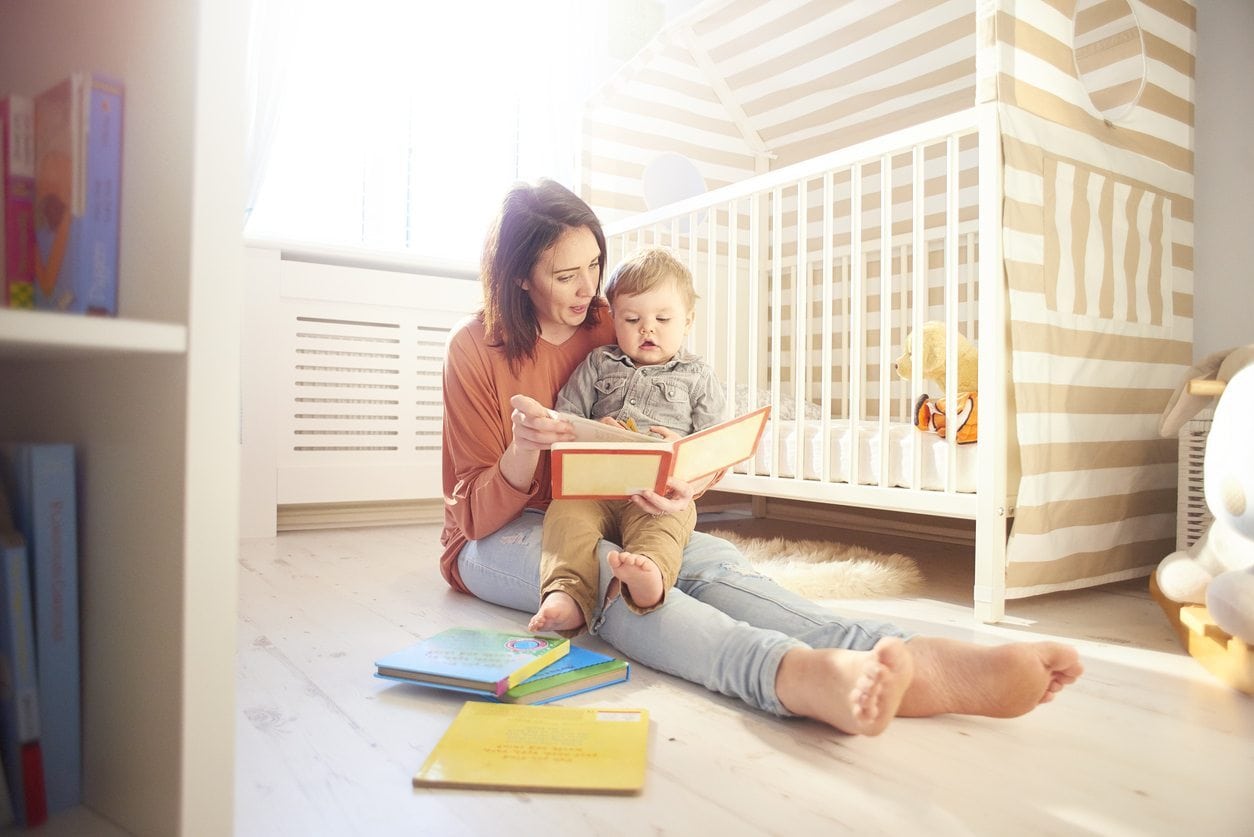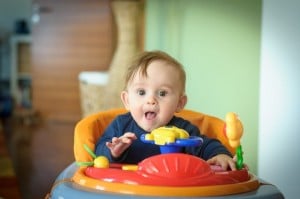Have you ever thought about reading a book to your child without actually reading the book to your child? There is so much more to reading a book than just reading the words. Here are a few tips to make reading to your kids more fun and help them get the most out of storytime.
1. Positioning
Whether reading to a baby or a young child, positioning is the first thing to consider when reading a book. Is your baby snuggled on your lap for contact and bonding? Or maybe you are lying on the floor with your baby with the book in front of you, allowing him some tummy time. Perhaps you are encouraging him to sit on his own, building some trunk strength, while you sit beside him, or maybe you are both tucked into her bed, warm and cozy, ready to sleep. All of these positions for reading are beneficial and can be part of the storytime “rotation.” You don’t always need to read in the same position. Sometimes, it is fun to be face-to-face so he can see your facial expressions and you can maintain eye contact.
2. Engagement
The second thing to think about is engaging your child. Some great ways to engage your child in the story are to sing the words, change your voice inflections, and change the volume of your voice occasionally to keep it interesting. You could also read with a stuffed animal or puppet in your hand that “acts out” the words to the story. Maybe the stuffed animal or puppet even gives your child kisses or tickles their belly when a certain word is read. You could declare a “word of the day” before you begin the story.
When reading to your baby, you do not really have to read the words in the book. The primary goal of reading to your baby is to engage her, talk to her to build her vocabulary, and bond with her. You can narrate what you see in the pictures, make up your own story while she looks at the pictures, or read part of the story but add your own embellishments to round out the story.
3. Ask Questions
Further, engage your baby or young child by asking him questions as you read. Make the story pertain to her. For example, “This boy has a puppy, just like you! His puppy is brown, and your puppy is black.” Encourage your child to participate by asking her questions about the story. For example, “Why do you think the duck is sitting on her egg?” Ask older children about the plot to assess their comprehension of the story. For example, “Who went ice skating with Tom? What happened when he stepped on the ice?”
4. Build Emotional Intelligence
Use the story to talk about emotions with your child. Ask babies and younger children specific questions about the characters in the book. For example, “Is this boy happy or sad?” You can expand upon this by asking your child why the character is happy or sad. For older children, you can build upon this and relate the story to them by asking questions such as, “Can you think of a time when you felt sad like Eyore?” and “Why is Eyore sad?” and “What made you sad?”.
Before babies can respond to you, it is still helpful to ask them questions because they are learning the pause and flow of a conversation. They will eventually start to babble when you pause and allow them time to respond.
5. Talk About It
For older children, the book may serve more as a “conversation starter” than a story, which is excellent because it provides language, interaction, and connection between you and your child.
Sometimes, as parents, we read the same book repeatedly because babies and young children love repetition, and that’s how they learn. However, you can use some of these strategies to keep it new, fresh, and interesting every time.
































